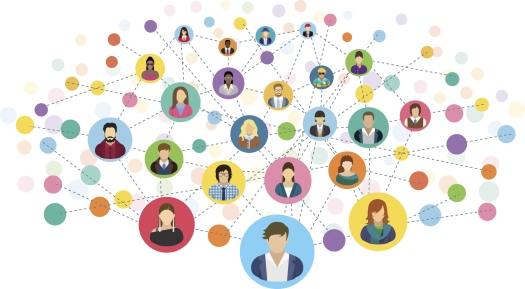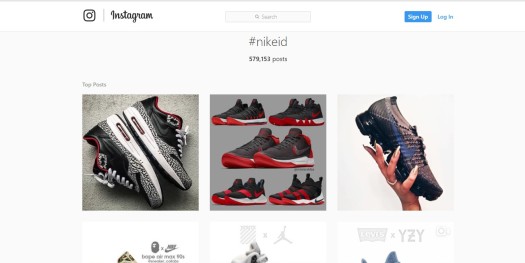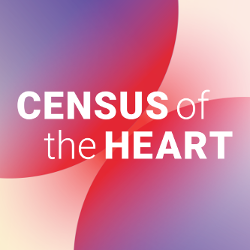Hello everyone and welcome back to series ‘Sugar and Spice and All Things DICE’! This will be my second blog in this series and today we will be talking about the ‘Get Social’ conference. This conference featured some of Ireland and the UK’s best social media marketers discussing the strategies they use in their marketing campaigns. We had the pleasure of listening to representatives from companies such as LinkedIn, Pieta House, Survey Monkey and many more.
Connection

A big theme in all of the speakers speeches was the use of social media to connect with people. Steve Conlon (Account Director at LinkedIn) described the site as a “medium for connecting with the business world around you for individuals or companies”. Paul Berney even went so far as to talk about not just social media marketing but “connected marketing”. However, Brian Higgins (CEO of Pieta House) illustrated the best the power of social media in connecting people all over the world when he discussed his Darkness Into Light fundraiser. Through the use of Twitter, this event, which began in Ireland, has spread to the US, Australia and many more countries all over the world. The #DIL (Darkness Into Light hashtag) has even trended in Vietnam.

Connecting with customers is becoming more and more important in today’s business environment. As seen in a 2010 Harvard Business Review article titled ‘Rethinking Marketing’, successful marketing is becoming more personalised. In response to this, firms have begun making a strong effort to try and connect with their customers by establishing Chief Customer Officers (CCOs) and customer managers, whose duty it is to carry out this role. Social Media is an extremely useful tool in helping achieve this goal.
The Power of Consumers
Another issue which was frequently mentioned is the power consumers now have in the business world. Thanks to social media consumers can now easily connect with firms and even other consumers to express their opinions on products and services. This presents both a great opportunity and threat to businesses.
The Benefits
On one hand, it offers firms a chance to get information from their customers as to what products and services they want and to modify their offering to fill these needs. It also allows them to use these consumers as tools for promoting their goods and services. The latter can be a very effective form of marketing due to the level of connection between consumers as discussed earlier. Ian Campbell (Head of Digital at Havas Media) talked about the importance of building media rather than buying it. NIKE is one firm that excels in this with their NIKEid website where you can design your own shoes and they will then make and send them to you. People who avail of this service may then want to share their designs with others on Instagram or Twitter.

NIKEid is a great example of how the power of consumers can be used in a positive way. NIKE is essentially outsourcing their R&D and Marketing departments to the consumers, who are providing these services for free. The consumer creates and designs the new product and then spreads awareness of the product/service by sharing it on their social media accounts.
 Another fine example of this, which was mentioned by Aideen Burke of LK Shields is Coca Cola’s #ShareACokeWith initiative. In this campaign Coke placed people’s names on the labels of bottles and cans of Coke. This idea was a huge success and they saw significant increases in their sales during this period.
Another fine example of this, which was mentioned by Aideen Burke of LK Shields is Coca Cola’s #ShareACokeWith initiative. In this campaign Coke placed people’s names on the labels of bottles and cans of Coke. This idea was a huge success and they saw significant increases in their sales during this period.
Furthermore, Kathy Scott (Co-Founder and Creative Director at Trailblazery) also talked about the positive power consumers can have in spreading awareness about your product/service. She talked about her ‘Census of the Heart’ survey which she posted of twitter and how the number of responses seemed to grow exponentially as people who took the survey then shared it with their followers, who in turn did the same and so on. In the end approximately 12500 people took the survey.
The Difficulties
This immense power which consumers now have is not always a good thing for firms and can cause some serious threats and worries for businesses. Aideen Burke of LK Shields talked a lot about the concerns firms should have with using user-generated content created on social media. She mentioned that it is very important that a firm has clear guidelines for engaging in social media marketing as to avoid copyright infringement.
Another worry for companies would also be the spread of consumers’ opinions that are damaging to the businesses brand. Kathy Scott implicitly mentioned this worry when she talked about how she used the backlash on Twitter from the issuing of the Irish Census to help promote her survey ‘The Census of the Heart’. Although it’s irrelevant whether or not consumers enjoy the Census, as it is mandatory, it does show how easy it is for people to complain about things to a large audience and how these complaints can begin to have a snowball effect. If a similar Twitter backlash were to happen to a business it could seriously damage their profitability and brand.
Although it’s irrelevant whether or not consumers enjoy the Census, as it is mandatory, it does show how easy it is for people to complain about things to a large audience and how these complaints can begin to have a snowball effect. If a similar Twitter backlash were to happen to a business it could seriously damage their profitability and brand.
The Speakers
During the ‘Get Social’ conference there was 5 speakers and one panel discussion. Although I have already discussed some of the recurring themes in their speeches, I now want to talk about some of the speakers in more detail. The speakers I have chosen are the ones who I personally found to be the most interesting. These are Brian Higgins, Paul Berney, Steve Conlon and Aideen Burke. I felt that each of these speakers discussed interesting elements and concerns of Social Media marketing.
Brian Higgins (CEO at Pieta House)

Pieta House is a non-profit organisation whose main goal is suicide prevention. Brian spoke about how they fundraise for the organisation, mentioning specifically their flagship fundraiser: the Darkness Into Light sponsored 5k walk.
What I found interesting
I found Brian’s speech to be rather emotional as he listed off some of the statistics surrounding suicide. He made an interesting point when he spoke about the number of people who are negatively affected by a suicide. In 2015 there was 399 people who committed suicide and Pieta House estimates that there was 54000 people directly negatively affected by these suicides.
Another intriguing point he made was about the way in which social media has helped evolve peer-to-peer fundraising. He spoke about how in the past people who were trying to fundraise for their local GAA club or a charity had to go door to door asking people to help support them. This meant that the network of people which they could reach was restricted by how far they were willing to travel to meet these people.
Nowadays, however, it is far easier to reach a much wider network of people through the use of social media. A simple post can reach thousands of people around the world. There are even sites devoted entirely to this concept of peer-to-peer fundraising such as Kickstarter. This is extremely advantageous to a company like Pieta House.
How it relates to our lectures
In our lecture about social media marketing, we discussed the concept of the horizontal revolution. This is the idea that information now flows from consumer to consumer and not just from big companies to consumers. The horizontal revolution was first mentioned in the opening chapter of the book Social Media Marketing by Tuten and Solomon. Brian implicitly mentioned this horizontal revolution in his discussion on the evolution of peer-to-peer fundraising.
Steve Conlon (Accounts Director at LinkedIn)
 As I am sure most of you already know, LinkedIn is a social media site for working professionals and companies alike. Steve discussed how it can be a very useful tool for networking and how a good profile can give you a real advantage in the business world.
As I am sure most of you already know, LinkedIn is a social media site for working professionals and companies alike. Steve discussed how it can be a very useful tool for networking and how a good profile can give you a real advantage in the business world.
What I found interesting
The one thing that I found differentiated Steve’s speech from the others, was the fact that he spoke about how an individual can market themselves to a company and be successful. This notion of marketing oneself is not something new. In an article from 2003 titled ‘Marketing Yourself in the Competitive Job Market: An Innovative Course Preparing Undergraduates for Marketing Careers’ Taylor gave advice to marketing graduates on how to present themselves to businesses in such a way as to make them a more attractive hire than other candidates.
Despite the fact that this is not a new phenomenon, LinkedIn has completely revolution the way in which we market ourselves. It is no longer enough for us to simply present well in person, we must also present well online. As Brian showed us, LinkedIn is the first step in doing this. A good LinkedIn profile is the sign of a good potential employee.
Aideen Burke ( Member of the Intellectual Property and Commercial Team at LK Shields)

LK Shields is one of Ireland’s top commercial and corporate law firms with offices in Galway, Dublin and London. They deal with a lot of cases regarding copyright infringement in relation to user-generated content, which was the main focus of Aideen’s speech.
What I found Interesting
Of all the speeches given in the conference, I felt I learned the most from Aideen’s. I was completely unaware of the necessary precautions that must be taken to avoid legal troubles when using user-generated content in a marketing campaign. One good example she gave was the requirements that would be necessary to use a video of someone singing a Justin Bieber song into their hairbrush. First the company would have to get the consent of the person in the video. Then they would have obtain the rights to use the lyrics of the song in their campaign. In addition to that, if the song was playing in the background they would also have to obtain the rights to use the beat.
She also talked about some of the repercussions that can occur as a result of not complying with these regulations. One example she user was the Kraft Vs Anheuser-Busch case, in which the company used an image of Ms. Kraft, posted on their social media page by one of her friends, in a advertising campaign without her consent. She took a $1.2 million case against the company which was eventually settled.

How it relates to our lectures
In our lecture about social media marketing, there was a brief mention about user-generated content. However, Aideen really built on the foundation we received in class around this topic. She discussed the intricacies of using social media content for a business, which is definitely very beneficial information to any future entrepreneur.
Paul Berney (Founder of mCordis)

mCordis is a company which offers educational and advisory services to marketers on how to make the most out of the technology available to them. Paul spoke profoundly about the idea of “Connected Marketing”. This concept and a large portion of Paul’s speech relates closely to the theme of connection discussed earlier.
What I found interesting
Paul made a good point about how our digital-self is becoming more and more a part of who we are. He talked about how we live in a state of constant connectedness and the opportunities this presents for marketers. I was particularly interested in his 4 step approach on how marketers can use this state of constant connectedness to their advantage. The 4 steps he mentioned were:
- Build Understand: This is essentially finding out what people need. He described the 3 types of consumer needs: Wants, Shoulds and Frictions. This step is fairly simple and is really the basis of any marketing approach.
- Enable: This stage is all about getting the consumer to discover, choose, buy, experience and then hopefully love and share your product. In my opinion this is by far the most important stage and the other stages are simply there to compliment this stage. The goal of every marketer is to try and get people to buy and share your brand. However, the difference with connected marketers is that they try and draw consumers towards their products while traditional marketers try and push their products onto consumers. Social media is a great tool for helping them achieve this, as their online presence can help draw the attention of consumers to their offerings.
- Remove Barriers to Engagement: In this step he talked about making the process as easy as possible for the consumer. The example he used of bottles of wine in a shop is a particularly good one. The majority of people buying wine have little knowledge of what makes a wine a good wine so they just use price as a proxy. This step is all about removing these frictions of uncertainty and hassle.
- Be of Service: Similar to the previous stage, this stage is all about making the consumers’ experience as hassle-free as possible. Things such as voice recognition devices and recommended purchases are all examples of this
Social media marketing and connected marketing is clearly going to be a huge part of the future of marketing. The ‘Get Social’ seminar was a great introduction to this topic as it showed us the various elements of this phenomenon and helped prepare those of us who are looking to progress into a career in marketing. If any of you would like to watch any of the speakers here are the links: Paul Berney Steve Conlon Kathy Scott and Luis Franco Aideen Burke Ian Campbell Brian Higgins
Thanks to all of you for reading and until next time, goodbye and have a DICE day!
Bibliography
Rust, R., Moorman, C. and Bhalla, G. (2010). Rethinking Marketing. Harvard Business Review, 88(1/2), pp.94-101.
Taylor, K. (2003). Marketing Yourself in the Competitive Job Market: An Innovative Course Preparing Undergraduates for Marketing Careers. Journal of Marketing Education, 25(2), pp.97-107.
Tuten, T. and Solomon, M. (2013). Social Media Marketing. 2nd ed. London: SAGE Publication, p.4.
